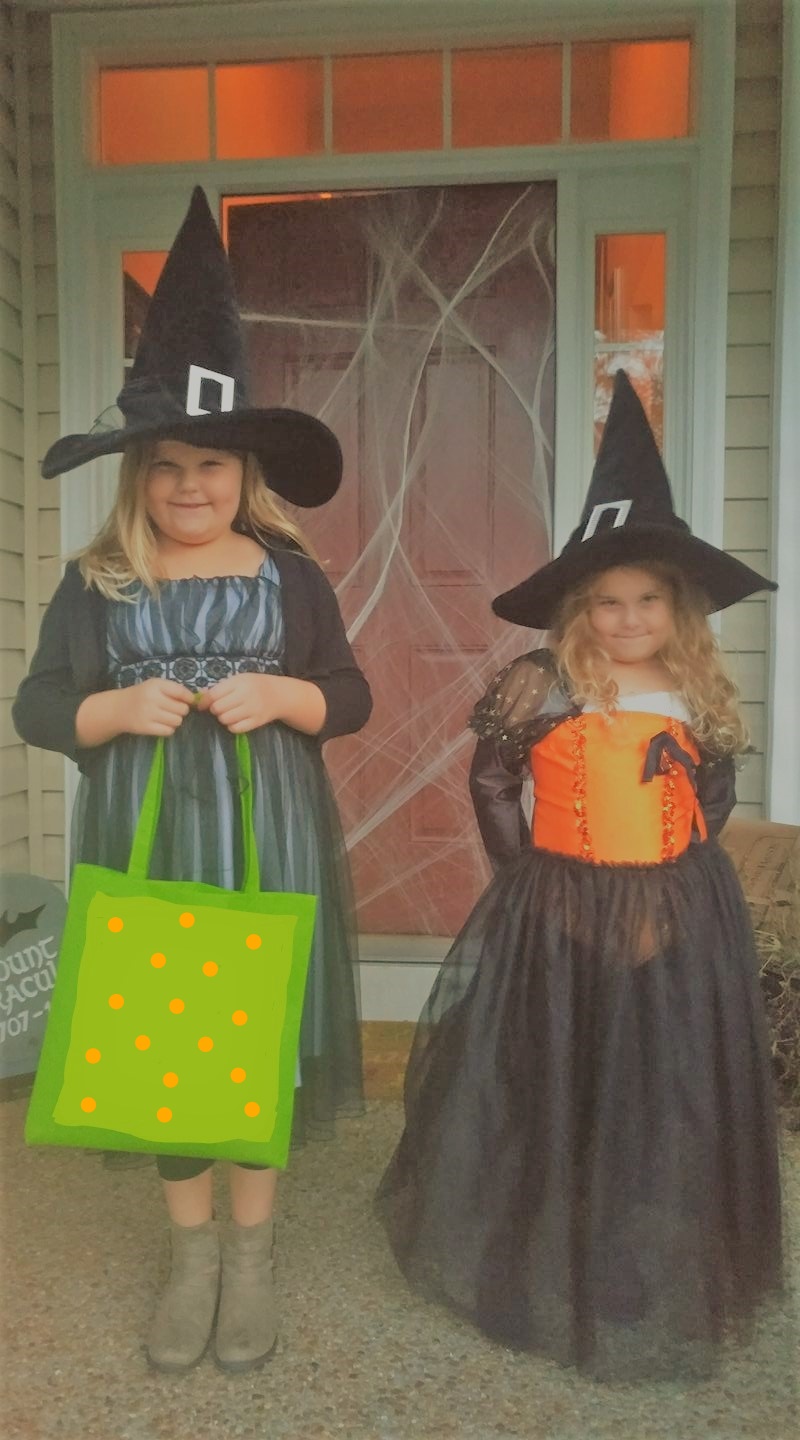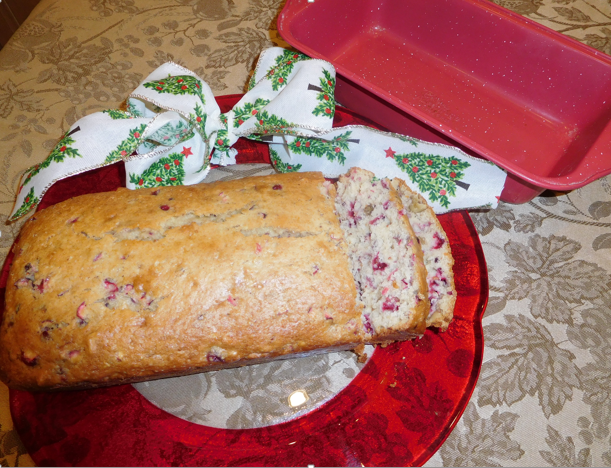
by Melanie Taylor | Jun 23, 2018

Always supervise children closely around water.
Photo credit: Marie Arick
Summer is here! As the long, hot days of summer move forward there are many things to consider when it comes to children and water safety. Each summer we hear of tragic incidents of children drowning in pools, spas, and other bodies of water. These tragedies may be avoided by following a few simple tips to keep your child safe while letting them enjoy their summer break.
The U.S. Consumer Product Safety Commission (CPSC) is the agency charged with protecting the public from unreasonable risks of injury or death from thousands of types of consumer products under the agency’s jurisdiction. In addition to Pool and Spa Safety, the CPSC is committed to protecting consumers and families from products that pose a fire, electrical, chemical, or mechanical hazard. CPSC launched the campaign, PoolSafely.gov, which provides Pool Safely: Simple Steps to Save Lives, a national public education campaign to reduce childhood drownings, submersion injuries and entrapments. Review these tips below.
Tips from PoolSafely.gov and CPSC:
- Never leave a child unattended in or near water.
It is recommended to designate an official “Water Watcher”, this is an adult assigned with supervising the children in the water. This should be their only task – they should not be reading, texting or playing games on their phone. Have a phone close by at all times, in case you need to call for help, and if a child is missing, check the pool first. Even when a lifeguard is present, parents and caregivers should still take the responsibility of being a designated “Water Watcher”. When the lifeguard chair is empty, the other lifeguards may not be able to see the entire pool and when lifeguards are sitting in low chairs; other people in the pool can block their view.
- Teach children how to swim.
Swimming is fun, great exercise and it is a lifesaving skill, so why would you not instill this skill in your child? Be sure to enroll children in swimming lessons – the earlier the better. A few swimming lessons may just save their life.
- Teach children to stay away from pool drains.
Show your children where the pool drain is located and remind them of the dangers of those drains. Remind them not to play or swim near drains or suction outlets, especially in spas and shallow pools, and never enter a pool or spa that has a loose, broken or missing drain cover. Sadly, children’s hair, limbs, jewelry or bathing suits, etc. can get stuck in a drain or suction opening. When enjoying time in a spa, be sure to locate the emergency vacuum shutoff before getting in the water.
- Ensure all pools and spas – both in your backyard and any public pool you may visit – have compliant drain covers.
The powerful suction from a pool or spa drain can even trap an adult, let alone a child. The Pool and Spa Safety Act is named after Virginia Graeme Baker, a child that tragically died from drowning due to a suction entrapment from a faulty drain cover. Do to this act, it is now required by law that all public pools and spas must have drain grates or covers that meet safety standards to avoid incidents like the one that took Graeme’s life.
- Install proper barriers, covers and alarms on and around your pool and spa.
One of the biggest dangers with pools or spas is when they are left open without any proper fences, barriers, alarms and covers. Each of these can be lifesaving devices. A fence of at least four feet in height should surround the pool or spa on all sides and should not be made of a climbable material. The pool should only be accessible through a self-closing, self-latching gate. Teach children to never climb over a pool gate or fence. Always remove portable pool ladders when not in use, just so your child is not enticed to enter the water. It is also highly recommended to install a door alarm from the house to the pool area, and keep pool and spa covers in working order.
- Know how to perform CPR on children and adults.
CPR can be the reason a drowning victim survives. With all of the possible locations of CPR trainings, why not get CPR certified as an extra precaution in case there is a water emergency? CPR classes are available through many hospitals, community centers, or by contacting your local American Red Cross. Once certified, be sure to keep the certification up to date.
- Finally, take the Pledge!
Before heading to the water with your family, remember to take the Pool Safely Pledge. This online call to action is a reminder to stay safer around the water. This pledge for you and your child can be found at https://www.poolsafely.gov/pledge/. The pledge is supported by CPSC and the PoolSafely.gov initiative and Olympic swimmer Michael Phelp along with over 60,000 other pledge takers. Parents, you can also download coloring sheets and other fun PoolSafely.gov child friendly apps and songs.
With the large variety of water related summer activities available it does leave a chance for risky incidents. Some work and preparation ahead of time will make for a less anxious and more fun-filled summer. Planning for risk will lessen the high-risk stakes and make sure everyone is prepared in case of an emergency. So remember, Simple Steps Save Lives. Enjoy a safe, fun, and water filled time this summer!
Resources: For more information be sure to visit Pool Safely: Simple Steps Save Lives – https://www.poolsafely.gov

by Melanie Taylor | Oct 16, 2017

Make Halloween a fun and safe night for children and adults alike.
From candy to pumpkins to the costumes, Halloween is a fun-filled time for kids and adults alike. However, it can pose dangers. To help make this year’s trick-or-treat a safe and fun time, follow these simple safety tips compiled by the American Academy of Pediatrics.
CREATIVE COSTUMES:
Plan costumes that are bright and reflective. Make sure shoes fit well and costumes are short enough to prevent tripping, entanglement, or contact with flames.
Consider adding reflective tape or striping to costumes and trick-or-treat bags for greater visibility.
Because masks can limit or block eyesight, consider non-toxic makeup and decorative hats as safer alternatives. Hats should fit properly to prevent them from sliding over eyes. The makeup should be tested on a small patch of skin ahead of time to ensure there are no unpleasant allergies on the big night.
When shopping for costumes, wigs, and accessories, look for and purchase those with a label clearly indicating they are “flame resistant.”
If a sword, cane, or stick is a part of your child’s costume, make sure it is not sharp or long. A child may be easily hurt by the accessories if he/she stumbles or trips.
Do not use decorative contact lenses without an eye examination and a prescription from an eye care professional. While the packaging on decorative lenses will often make claims such as “one size fits all,” or “no need to see an eye specialist,” obtaining decorative contact lenses without a prescription is both dangerous and illegal. This can cause pain, inflammation, and serious eye disorders and infections, which may lead to permanent vision loss.
Review with children how to call 911 if they ever have an emergency or become lost.
PUMPKIN CARVING TIME:
Small children should never carve pumpkins. Children can draw a face with markers. Then adults can do the cutting.
Consider using a flashlight or glow stick instead of a candle to light your pumpkin. If you do use a candle, a votive candle is safest.
Candlelit pumpkins should be placed on a sturdy table, away from curtains and other flammable objects, and not on a porch or any path where visitors may pass close by. They should never be left unattended.
HOME SAFETY:
To keep homes safe for visiting trick-or-treaters, parents should remove from the porch and front yard anything a child could trip over such as garden hoses, toys, bikes, and lawn decorations.
Adults should check outdoor lights and replace burned-out bulbs.
Wet leaves and debris should be swept from sidewalks and steps.
Restrain pets so they do not jump on or bite a trick-or-treater.
TRICK-OR-TREAT TIME:
A responsible adult should always accompany young children during their neighborhood trick-or-treating.
Obtain flashlights with fresh batteries for all children and adults.
If your older children are going alone, plan and review the route that is acceptable to you. Agree on a specific time when they should return home.
Only go to homes with a porch light on and never enter a home or car for a treat.
Because pedestrian injuries are the most common injuries to children on Halloween, remind Trick-or-Treaters to:
- Stay in a group and communicate where they will be going.
- Remember reflective tape for costumes and trick-or-treat bags.
- Carry a cellphone for quick communication.
- Remain on well-lit streets and always use the sidewalk.
- If no sidewalk is available, walk at the far edge of the roadway facing traffic.
- Never cut across yards or use alleys.
- Only cross the street as a group in established crosswalks (as recognized by local custom). Never cross between parked cars or out of driveways.
- Do not assume the right of way. Motorists may have a hard time seeing Trick-or-Treaters.
- Just because one car stops does not mean others will!
- Law enforcement authorities should be notified immediately of any suspicious or unlawful activity.
HEALTHY HALLOWEEN TIPS:
A good, healthy dinner prior to parties and trick-or-treating will discourage children from filling up on Halloween treats.
Consider purchasing non-food treats for those who visit your home, such as coloring books, stickers, or pens and pencils.
Wait until children are home to sort and check treats. Though tampering is rare, a responsible adult should closely examine all treats and throw away any spoiled, unwrapped or suspicious items.
Try to ration treats for the days and weeks following Halloween to prevent overindulging, which will lead to a stomachache and ruin the night’s fun.
Make sure the Halloween night is fun and safe with the suggested tips above. These tips will help guarantee you all a ghoulishly good time.
Source: American Academy of Pediatrics
by Melanie Taylor | Aug 5, 2017

Most of us are willing to go to the doctor or the dentist, which are both part of taking care of our health. However, do you go to the eye doctor? If not, you definitely should add it to your healthy lifestyle regime. Eye exams at every age and stage of life can help you keep your vision strong. August is National Eye Exam month; this is the perfect reminder to schedule a comprehensive eye exam.
The Vision Council of America reports that 12.2 million Americans require some sort of vision correction, but do not use any. Nearly 50% of parents with children under 12 have never taken their children to an eye-care professional.
Many people think their eyesight is just fine, but then they get that first pair of glasses or contact lenses and the world becomes much clearer – everything from fine print to street signs. Improving and/or maintaining your eyesight is important – about 11 million Americans over age 12 need vision correction, but that is just one of the reasons to get your eyes examined. Regular eye exams are also an important part of finding eye diseases early and preserving your vision.
Eye diseases are common and can go unnoticed for a long time. Some diseases have no symptoms at first. A comprehensive dilated eye exam by an optometrist (a medical professional with a focus on regular vision care who can prescribe eyeglasses and contacts) or ophthalmologist (a medical eye doctor with a focus on the complete eye health) is necessary to find eye diseases in the early stages when treatment to prevent vision loss is most effective. During the exam, visual acuity (sharpness), depth perception, eye alignment, and eye movement are tested. Eye drops are used to make your pupils larger so your eye doctor can see inside your eyes and check for signs of health problems.
How often should you have an eye exam?
- A child’s eyes should be checked regularly by an eye doctor or pediatrician. The U.S. Preventive Services Task Force recommends vision screening for all children at least once between age 3 and 5 years to detect amblyopia or risk factors for the disease. Amblyopia is when the vision in one of the eyes is reduced because the eye and the brain are not working together properly. The eye itself looks normal, but it is not being used normally because the brain is favoring the other eye. This condition is sometimes called lazy eye.
- People with diabetes should have a dilated eye exam every year.
- People with a family history of glaucoma should have an eye exam every year.
- Adults with good health should have an eye exam at least every 2 years.
Some people are at higher risk for glaucoma and should have a dilated eye exam every 1 to 2 years:
- African Americans, ages 40 years and older.
- Everyone older than age 60, especially Mexican Americans.
- People with a family history of glaucoma.
Early treatment is critically important to prevent some common eye diseases from causing permanent vision loss or blindness:
- Cataracts (clouding of the lens), the leading cause of vision loss in the United States.
- Diabetic retinopathy (causes damage to blood vessels in the back of the eye), the leading cause of blindness in American adults.
- Glaucoma (a group of diseases that damages the optic nerve).
- Age-related macular degeneration (gradual breakdown of light-sensitive tissue in the eye).
Other reasons to see your eye doctor: If you have any of the following eye problems, do not wait for your next appointment, schedule your eye appointment as soon as possible:
- Decreased vision
- Draining or redness of the eye
- Eye pain
- Double vision
- Diabetes
- Floaters (tiny specks that appear to float before your eyes)
- Halos around lights
- Flashes of light.
Center for Disease Control and Prevention (CDC) 10 Tips to Protect Your Vision:
- Get a regular comprehensive dilated eye exam.
- Know your family’s eye health history.
- Eat right to protect your sight. You have heard that carrots are good for your eyes. But eating a diet rich in fruits and vegetables—particularly dark leafy greens, such as spinach, kale, or collard greens—is important for keeping your eyes healthy, too.
- Maintain a healthy weight.
- Wear protective eyewear when playing sports or doing activities around the home. Protective eyewear includes safety glasses and goggles, safety shields, and eye guards specially designed to provide the correct protection.
- Be cool and wear your shades. Wear sunglasses that block out 99% to 100% of UV-A and UV-B radiation (the sun’s rays).
- Give your eyes a rest. If you spend a lot of time at the computer or focusing on any one thing, you sometimes forget to blink and your eyes can get fatigued. Try the 20-20-20 rule: Every 20 minutes, look away about 20 feet in front of you for 20 seconds. This short exercise can help reduce eyestrain.
- Clean your hands and your contact lenses properly.
- Practice workplace eye safety.
- Quit smoking or never start.
Of the estimated 61 million US adults at high risk for vision loss, only half visited an eye doctor last year. Regular eye care can have a life-changing impact on preserving the vision of millions of people. Be sure to make your eye health a priority in your life. Healthy eyes lead to better vision and an overall better quality of life. Sources: Vision Council of America https://www.thevisioncouncil.org/ Center for Disease Control and Prevention https://www.cdc.gov/

by Kendra Hughson | May 5, 2017

Family rituals and traditions, like family vacations, make lasting memories.
This will be my sixth Mother’s Day, so I am not an experienced mother by any stretch of the imagination. As a Family and Consumer Sciences Extension Agent, I am fortunate to have plenty of coursework and some practical experience in working with children– but real life is different. Here are a few of the things I have learned – from coursework and just a little bit of experience:
Every stage of childhood brings a new joy and a new challenge. Understanding child development can help parents know what to expect and how to handle challenges. Extension is a great resource for child development. We have fact sheets on all ages and stages of development. You can find them in our Electronic Data Information Source (EDIS) publications. Search them here: http://edis.ifas.ufl.edu/topic_child_development
Finding effective discipline techniques and sticking to them also is a challenge. Children need consistency. I have found that focusing on good behavior and having clear, consistent rules makes life much more peaceful. Now that my child is in school, we use a simple chart with just two or three items and use colored dots, similar to what my daughter is used to in school. This keeps it consistent and focused on the positive behaviors I want to see. My daughter is excited to earn privileges and the reward of good behavior dots or stickers. Our UF/IFAS Extension site has some great ideas for discipline too. Find them here: discipline resources.
Children need routines. I think adults do, too. Having a routine and sticking to it helps children know what to expect. Those family rituals and traditions are just as important for building family stability and a sense of belonging. They make for great family memories! Don’t forget to make time for bedtime stories, making cookies, or for family celebrations, like Mother’s Day.
I am not an expert at parenting. I have made mistakes, some big, some little. When I do need expert advice, I go back to what I have learned from my work in Extension. Extension has all the research-based information you can trust on parenting and a variety of other topics. Check it out: edis.ifas.ufl.edu.
by Pam Allen | Nov 25, 2016
 It is that time of year when we think about giving special gifts to the people in our lives that mean the most to us. Your list might include teachers, neighbors, friends and co-workers. Gifts don’t have to be expensive, it is the thought behind the gesture that means the most to your friends and family. Whoever is on your list this year, think about using your kitchen as grand central for gift making. Gifts of food are heart felt and send a message that you spent time making something special that looks good and tastes yummy. These gifts say thank you in a thoughtful way. Don’t forget to include your kids in the process of cooking and assembling gifts to teach them something about budgeting and enjoying the simple pleasure of gift giving.
It is that time of year when we think about giving special gifts to the people in our lives that mean the most to us. Your list might include teachers, neighbors, friends and co-workers. Gifts don’t have to be expensive, it is the thought behind the gesture that means the most to your friends and family. Whoever is on your list this year, think about using your kitchen as grand central for gift making. Gifts of food are heart felt and send a message that you spent time making something special that looks good and tastes yummy. These gifts say thank you in a thoughtful way. Don’t forget to include your kids in the process of cooking and assembling gifts to teach them something about budgeting and enjoying the simple pleasure of gift giving.
The way the gift is presented can be just as important as the food itself. Try to pair up containers with the food gift that will be used after the food is gone. This can be a gift that keeps on giving. Examples are a decorative plate filled with cookies, pie plate filled with your favorite pie or a trifle bowl filled with goodies. You get the idea. Another thought is to put together items that say “sit and take a break” like a loaf of quick bread paired with a pound of coffee, homemade salsa with chips and a favorite beverage. The main goal is to show that you put thought in the gift and spent time preparing the presentation.
With everyone watching their budgets this year, plan ahead to get the creative juices working by purchasing ingredients on sale and found locally. Local products in December include pecans, sweet potatoes, honey, peanuts, persimmons, satsumas and jams and jellies sold at local farmers markets. So get going and unleash your creativity, and give a few gifts from your kitchen and your heart. Have fun making these gifts, and remember to enjoy the process.
One of my favorite festive cookie is the Chocolate Crinkle. The crackle on top with the chocolate and white sugar says it is holiday time. These cookies make a good food gift as they stay firm and will last up to a week. They also freeze well if you need to make ahead of time. Package the gift by placing on a nice festive plate and wrap with clear wrap and decorate with ribbon.
Chocolate Crinkle Cookie
½ cup of shortening
1 2/3 cup sugar
2 tsp vanilla
2 eggs
Two 1 ounce squares of unsweetened chocolate (melted)
2 cups sifted all-purpose flour
2 tsp baking powder
½ tsp salt
1/3 cup of milk
½ cup chopped walnuts or pecans (optional)
Cream together the shortening, sugar and vanilla. Beat in the two eggs then add the melted chocolate. In another bowl, sift together the flour, baking powder and salt. Add flour mixture slowly to creamed mixture alternating with the milk until thoroughly blended. Stir in walnuts. Chill for 3 hours. Form in 1 – inch balls and roll in confectioners’ sugar. Place on greased cookie sheet 2 to 3 inches apart. Bake in moderate oven at 350 degrees for 15 minutes. Cool slightly then remove from pan. Makes 48.
They are now ready to put in a container and give to friends. This cookie freezes well.
Prepare this nut bread then decorate with wrapping and ribbon. You might include the loaf pan as part of the gift. Include a brick of cream cheese along with a decorative butter knife for a complete package.
Cranberry Nut Bread
Ingredients
2 cups all-purpose flour
1 cup sugar
1 1/2 teaspoons baking powder
¾ teaspoon salt
1/2 teaspoon baking soda
3/4 cup orange juice
1 tablespoon grated orange peel
2 tablespoons shortening
1 egg, well beaten
1 tsp vanilla flavoring
1 1/2 cups Fresh Cranberries, coarsely chopped
1/2 cup chopped nuts (walnuts or pecans)
Directions
Preheat oven to 350 degrees. Grease a 9 x 5-inch loaf pan. Mix together flour, sugar, baking powder, salt and baking soda in a medium mixing bowl. Stir in orange juice, orange peel, shortening and egg and vanilla. Mix until well blended. Stir in cranberries and nuts. Spread evenly in loaf pan. Bake for 55 minutes or until a toothpick inserted in the center comes out clean. Cool on a rack for 15 minutes. Remove from pan; cool completely. Makes 1 loaf (16 slices). Bake loaf in decorative pan as part of the gift. Make sure you cool after cooking then replace in pan and wrap as part of the gift.
The Real Sweet Potato Pie
Use local sweet potatoes to promote locally grown produce. After baking, cool then give as a gift in a nice pie plate. Wrap, refrigerate with instructions on reheating for serving. For added effect, bundle with whipped cream and pie knife.
Pre Preparation
Prepare your sweet potatoes for the pie mix. Select 6 – 7 large sweet potatoes and cut in half or quarters. Boil potatoes slowly for about 30 minutes. Let cool. Peel potatoes after they cool. The peel should come off very easy. Measure six cups of sweet potato in a mixing bowl. Use a stand mixer to beat the sweet potatoes and do not scrape off any mixture from beaters. This will contain the stringy part and you do not want it in your pie. Discard the strings.
Ingredients
6 cups cooked mashed sweet potatoes
1 cup evaporated milk
½ cup butter
2 tsp vanilla flavoring
2 tsp nutmeg
1 tsp butter flavoring
4 eggs
1 cup sugar
Mix all ingredients in a stand mixer until well blended. The mixture should be smooth and free of lumps. The mixture will keep in the refrigerator up to a week and may be frozen for future use. Be sure to label with date and amount before placing in freezer.
For the Pie
Place mixture in unbaked pie shell and smooth to the edges. You will need about 2 ½ cups for each 9 inch deep dish pie shell. Mini tart shells may also be used for individual pies. This recipe makes about 3 pies or 12 individual mini pie tarts. Cook at 350 degrees until puffed and browned slightly on top. About 40 minutes.
Visit your local farmers market to purchase local nuts, honey, produce and jams and jellies. Be sure to look for locally grown and support our area growers. For additional information about local produce visit: http://wfrec.ifas.ufl.edu/panhandle-produce-pointers/








